Pineapple is botanically called Ananas comosus, an herbaceous plant growing up to 1.5 meters in height. The stem is stocky with waxy, thick leaves. Pineapple is the important commercial fruit of India. It is the most important fruit, with large production in tropical and sub-tropical regions, and is highly appreciated by consumers.
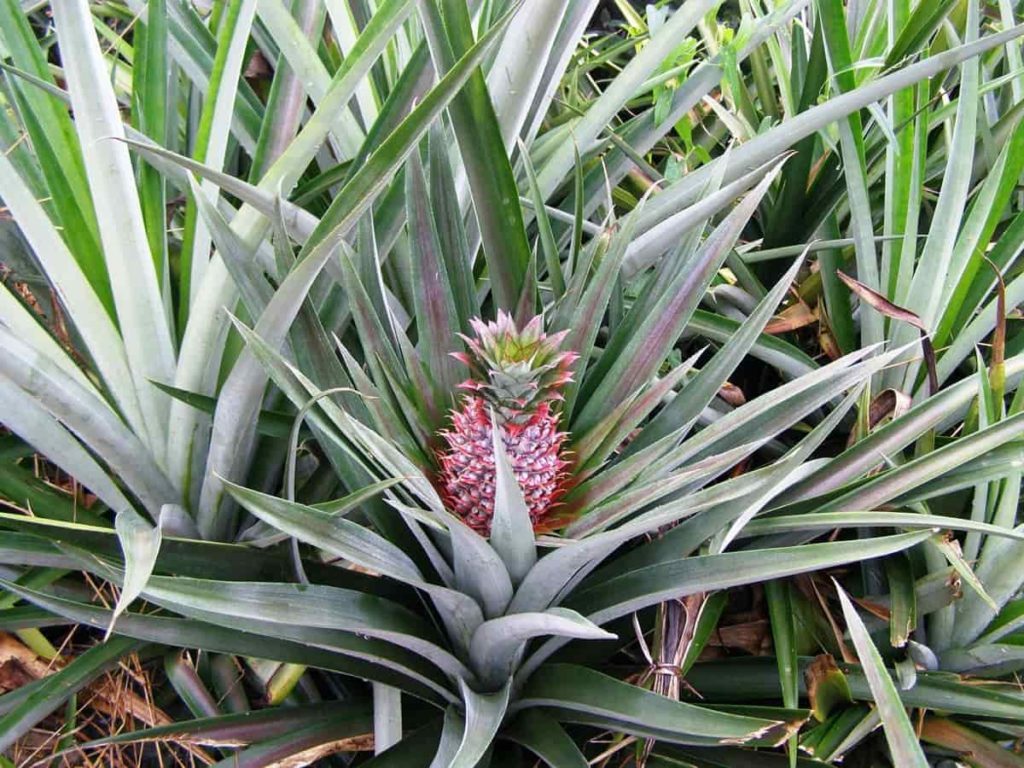
The Pineapple plant has many distinctive morphological, anatomical, and physiological characteristics that determine important aspects of Pineapple crop management, such as flower induction, water use, and plant breeding methods. However, harvesting high-quality sweet fruits requires more attention to soil nutrients. Proper planting and regular fertilization preparation can do wonders for a Pineapple plant. Let’s check out the top 17 steps/ways/methods to boost Pineapple yield below.
Steps/ways/methods to boost Pineapple yield
Step 1: Soil preparation for high fruit production
Pineapple cultivation is limited to the high rainfall and humid coastal areas of peninsular India and the hilly areas of the country’s northeastern region. Firstly, you need to understand that Pineapple thrives best on the well-drained sandy soil of the nature of its roots. The roots are fragile and can only grow in loose, well-aerated soil with relatively good water retention. Therefore, silty soil and clay soil are not recommended for growing Pineapple.
Pineapple plants prefer sandy, loamy soil with a neutral to slightly acidic pH. Prepare the soil for Pineapple plants by adding a small amount of compost or compost to the top 12 inches of soil, ideally a week before planting. Compost helps the soil retain water and important nutrients, helping the Pineapple plants’ roots grow. Applying a thin natural mulch layer, such as wood chips or bark, after planting helps improve the nutrient quality of the topsoil.
Step 2: Land selection for Pineapple growth
The selection of a good piece of land is essential before starting Pineapple cultivation. Land preparation includes primary and secondary tillage, land reclamation, land leveling, and creating ridges and furrows. It is better to select plain land instead of a sloppy land. The soil should be such that the Pineapple receives sunlight throughout the day.
In case you missed it: A Step-By-Step Guide to High Density Fruit Farming: For Guava, Banana, Mango, Pineapple, Lemon, Papaya, Litchi, and Apple
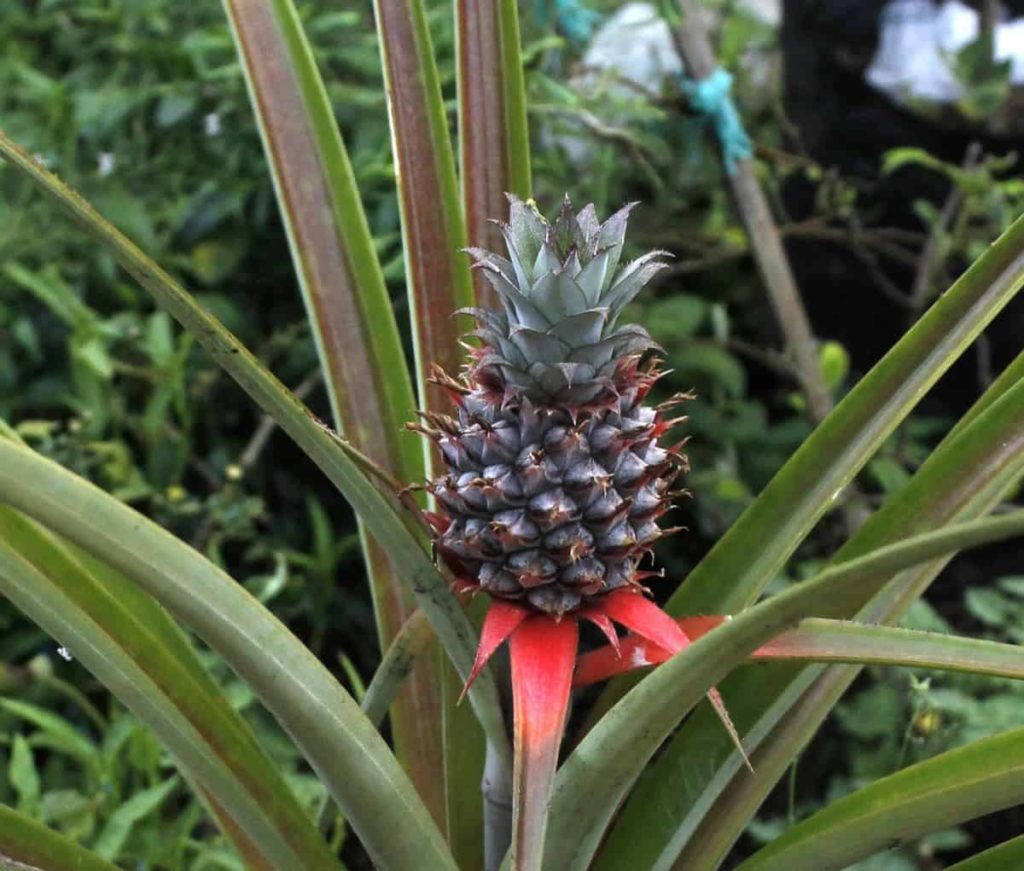
Sunlight helps Pineapples to set fruit quickly. Also, grow Pineapple in half shade. Unwanted materials, large stones, weeds, and other materials that may affect the growth of the Pineapple tree are removed from the site. An important task in preparing the land is designing the garden layout. Make some maps or lines depending on the planting system, whether square, rectangular, hexagonal, or triangular. And choose a place to plant in a garden setting.
The first step in Pineapple production is the land preparation for Pineapple planting. Growers must treat the soil, including applying fertilizers, herbicides, and pesticides. Then, they prepare the beds, clear and weed, and burn off excess plants; this requires herbicides. The final step in soil preparation is applying chemicals designed to kill any parasites already in the soil, also known as nematicides.
Step 3: Tips to increase the size of Pineapple fruit
Removal of suckers, slips, and hapas during plant growth and fruit development will accelerate fruit development and increase fruit size. However, new planting material will be available after harvesting the fruit before allowing a few suckers, slips, or hapas to germinate.
Step 4: Are coffee grounds good for Pineapple plants?
Coffee grounds have high nitrogen levels, and Pineapples need nitrogen. Sprinkle on the coffee grounds and sprinkle some water over it.
Step 5: Select the most important varieties for more growth
India’s most commercial Pineapple varieties are Kew, Giant Kew, Queen, Mauritius, Jaldhup, and Lakhan. Among these varieties, the Queen, Giant Kew/Kew, is widely grown in the northeastern parts of India and is preferred by fruit juice makers.
There are different types of Pineapples, but Pineapples are divided into three major groups: the Cayenne, the Queen, and the Spanish.
- Cayenne group – Smooth Cayenne, Giant Kew, Kew, Typhoons, Hilo, Charlotte, Champaka, Baronne de Rothschild
- Queen group – Queen, James queen, Victoria, Comte de Paris, Common rough, Mac Gregor, Alexandra Ripley queen
- Spanish group – Red Spanish, Singapore Spanish, Selengor green, Nangka, Gandol, Betek, Castilla, Espanola roja, Cabezona, Pina de Cumana.
Step 6: Pineapple growing stages for more development
Pineapples can be propagated along the crown of the plant, the topmost leafy part of the fruit you usually discard. Also, they can be cultivated from shoots that grow from the base of the plant, known as pups. A Pineapple plant can take 14 to 18 months after planting to reach maturity and produce flowering stems. Then, it takes another 50 days for the first flower to bloom.
In case you missed it: High Density Pineapple Planting – Farming In India
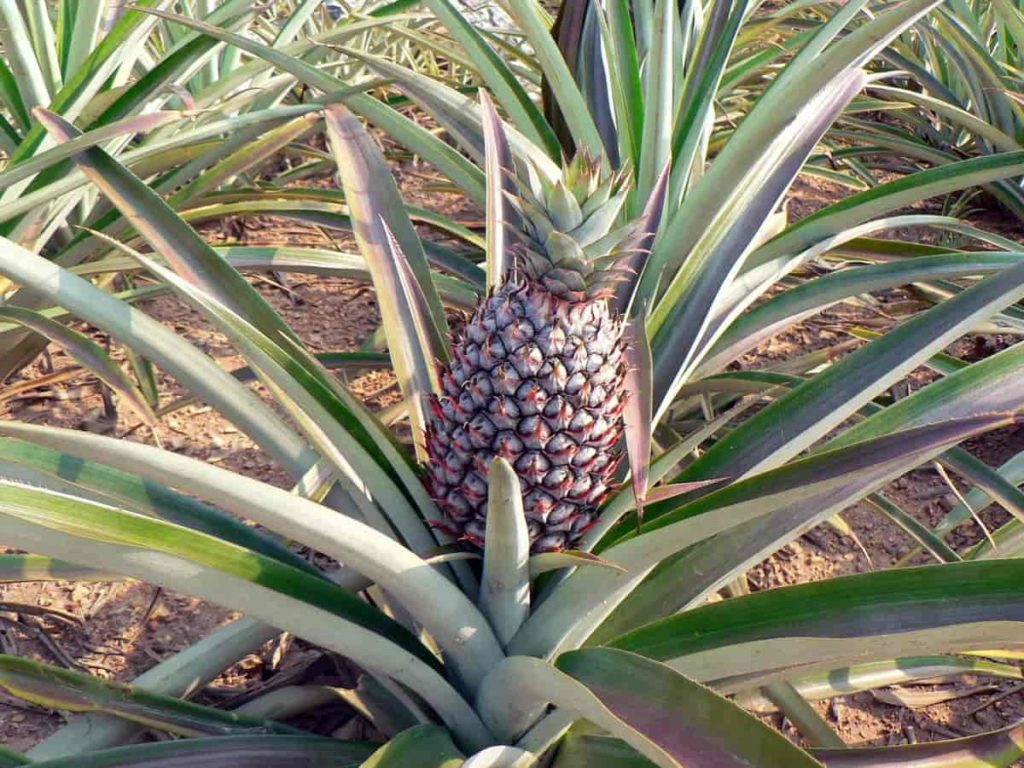
Although each flower will only live for a day, the plant will flower for about a month before setting fruit. Each Pineapple plant produces a single fruit. Once the Pineapple plant has flowered, it can take five to seven months for the fruit to develop and ripen. Pineapples should be harvested when one-third to two-thirds of the skin has turned green-yellow. It is when the fruit is at its sweetest. The fruit can be harvested while it is still green, and the plant is allowed to ripen.
Step 7: Best practices in Pineapple cultivation
- Pineapple Growing Season in India – Rainy Season
- Pineapple Growing Time – 5 to 6 months; old suckers flower in 12 months, but flowering takes 19 to 20 months after crowning.
- Pineapple Flowering Time – February to April
- Pineapple Fruiting Time – July to September is the Pineapple fruiting season.
Step 8: Tips for making Pineapple farming more profitable
Mark the plants that produced the largest, sweetest, and juiciest fruit, so you know they are worth planting as suckers. Avoid plants that produce long fruit stalks. The fruit should be as low as possible, or it will fall and burn in the sun.
However, it is initially tempting to choose plants that produce lots of seeds, keep in mind that seeds are produced at the expense of fruit. You get bigger, better fruit from plants that produce fewer seeds. Pineapple plants have small root systems and rely heavily on their leaves for water and nutrients. So, there is no objection to digging and transplanting them.
Step 9: Planting systems for getting more fruit yield
Four different planting systems viz. Flatbed, furrow, contour, and trench are followed. Planting systems vary depending on soil and rainfall. Terracing or contour planting is adopted on slopes, which helps prevent soil erosion. Pineapple is mainly planted only at the beginning or end of the monsoon. However, September is the best time to plant it in the NEH region.
About 85% of plants bear fruit and are ready for harvest within 18 months of planting. Planting Pineapple on slopes is better for higher yields due to less soil loss. Pineapple farms in Costa Rica use popular propagation methods such as crown grafting, planting seeds or suckers, and sometimes seeds or tissue culture are also used by Pineapple growers.
- Pineapple suckers or seeds: Choose suckers or slips weighing 350 to 450 grams; this is considered to yield more platelets than one mother plant.
- Growing Pineapples from Cuttings: Kew Pineapple variety can be grown from Pineapple leaf cuttings. To do this, you should remove the dried leaves from the base of the Pineapple sucker and then trim it with the help of a trimming tool.
- Slips: A solution of 5 ml of 0.1% diazinon in 4.5 liters of water is prepared to kill insects on slips.
Step 10: High-density planting distance for more production
High-density Pineapple cultivation is recommended for commercial viability. Planting density 63,400 plants per hectare. (22.5 x 60 x 75 cm) is ideal for subtropical and mildly humid conditions.
In contrast, the plant density for hot and humid conditions is 53,300 plants per hectare spaced at 25 cm apart from plant to plant within a row about 60 cm from row to row and from trench to trench about 90 cm, about 25 x 60 x 90 cm provides high crop yield. In the northeastern states’ rainier, more fertile, and mountainous regions, a lower density of 31,000 plants/hectare is recommended.
In case you missed it: Organic Pineapple Cultivation – Farming In India
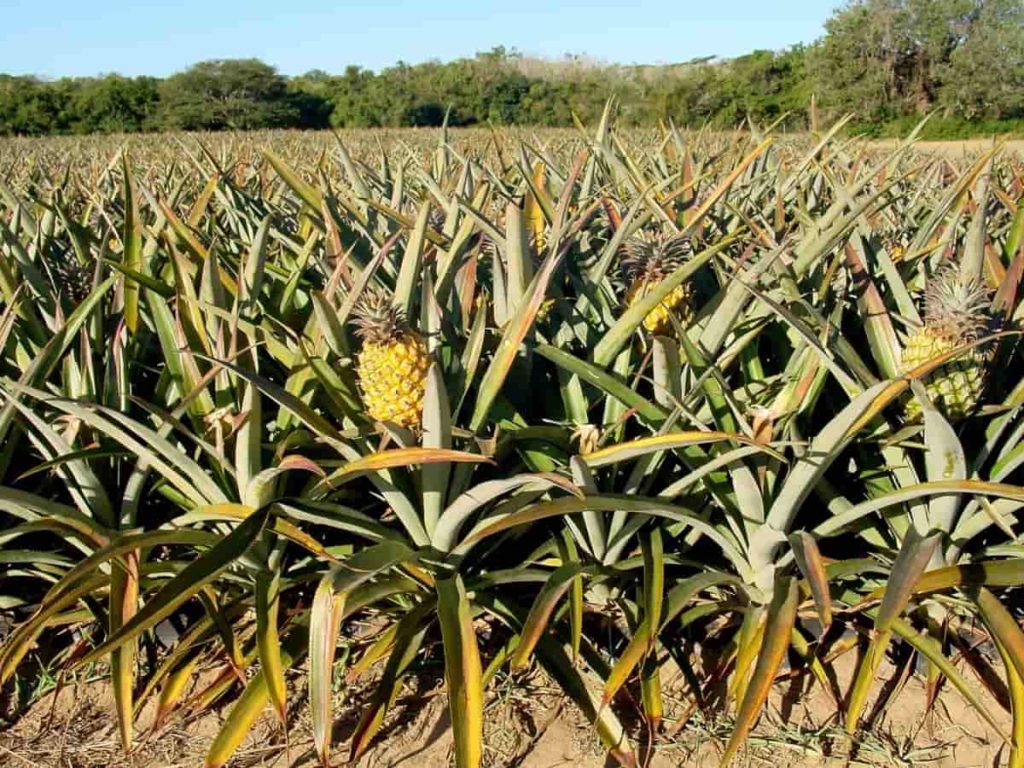
High-density planting: 70-105 tonnes per hectare yield may be obtained under high-density planting; yield/unit area increase of 45-85 tonnes/hectare can be achieved. Additional benefits of high-density planting include:
- Reduced weed infestation.
- Fruit protection from sunburn.
- Increased production of propagules (suckers and slips)/unit area.
- No plant lodging.
Step 11: Nutrition factors to promote good root development
Nitrogen and potassium are the important nutrients for Pineapple. Nitrogen is the main factor affecting yield and potassium in fruit quality. Phosphorus application is recommended in the early stages of growth to promote good root development. A dose of nitrogen, P2O5, and K2O at 12,4 and 12 grams/plant/year is optimum under Jorhat conditions. No response to the request has been seen.
However, 4 grams P2O5/plant increases fruit weight and yield in the rattan crop. Plants receiving 12 grams K2O/plant/crop produced higher yields under irrigated and rainfed conditions without negatively affecting fruit quality. Application of N and K2O each by 12 grams/plant is recommended. P application is not required. However, if the ground is poor in P, 4 grams P2O5/plant can be applied.
N should be applied in 6 divided doses. The first dose of nitrogen can be given two months after planting and the last dose 12 months after planting. K should be applied in two divided doses. Full P and half K can be applied at the Time of planting and the remaining K six months after planting. Fertilizers should be applied under rainfed conditions when moisture is available.
Step 12: Weeding and mulching for more Pineapple production
Weed control is particularly important from an economic point of view for any crop. Nutgrass is the most common type of weed in Pineapples. Since hand weeding is a laborious and cumbersome process, chemical herbicides are recommended. Diiron is recommended in combination with Bromacil as a pre-emergence spray. The pre-emergency spray is 0.6 kg Dirons with 0.8 kg Bromacil.
It was repeated five months after the first application with half concentration. If Pineapple is being grown as a rainfed crop, mulching is an essential step. The main purpose of mulching is moisture conservation and weed control. Using black polythene film is the easiest and least labor-intensive method of mulching.
However, using a mulch of leaves and straw and spreading them into the soil between Pineapple plants is a more organic mulching method. Maintaining soil moisture and weed growth are important issues in Pineapple cultivation. Mulching of field with black polythene followed by spraying grass/sawdust gives better yield and quality and inhibits weed growth.
Step 13: Irrigation management to maintain year-round production
Pineapple cultivation is mostly done under rain-fed conditions. Supplemental irrigation helps produce good-sized fruits in areas with high rainfall. Irrigation also supports off-season planting to maintain its year-round production. In case of low rainfall and hot weather, irrigation can be provided once in 20-25 days.
Pineapple trees can absorb water through their leaves. They don’t need a lot of water, so wait until the soil is dry before watering, and then water the leaves and soil. They are more likely to be affected by excess water than under water.
In case you missed it: Pineapple Farming Project Report, Cost and Profit
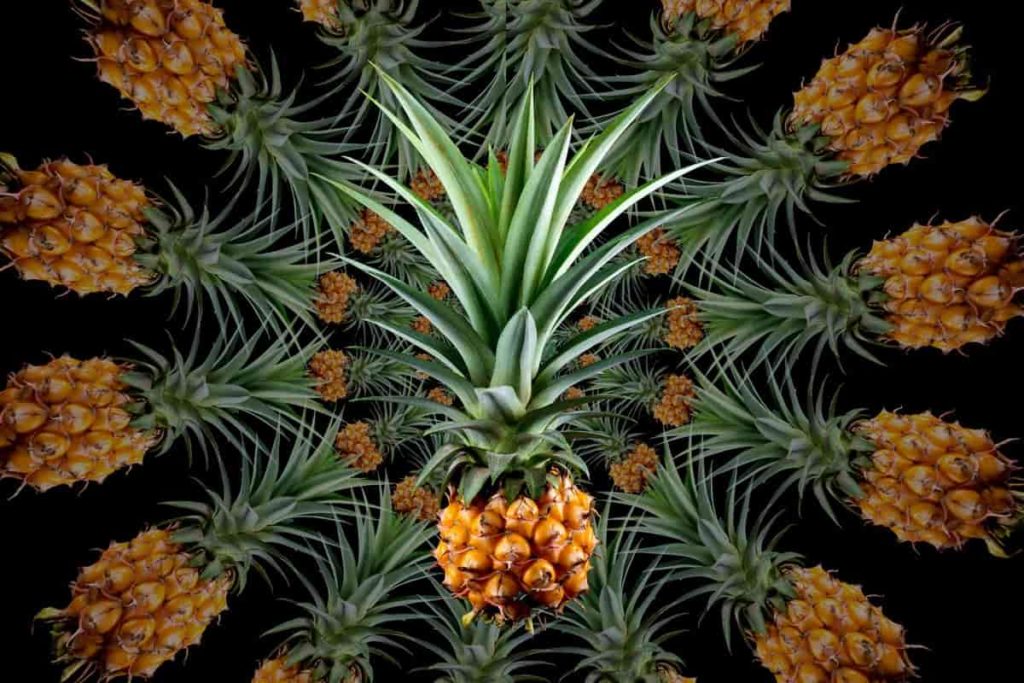
Step 14: Pests and diseases control for plant growth
The mealybug is the most important pest of Pineapple. Nymphs and adults suck sap from leaves and soft twigs. Monocrotophos (Nuvacron) 2.5 grams/liter of water for insect control and Dimethoate @ 2.5 ml/liter of water at the fruiting stage is recommended to manage the pest. Heart rot or stem and root rot diseases are common Pineapple diseases.
Green leaves turn yellow-green, and tips turn brown. When infected, the central whorl of leaves will come out with a soft pool. The leaves’ base shows rotting signs and emits a foul odor. The disease is mainly controlled by good drainage, proper selection of healthy planting material, and chemical preventive treatment with Dithane Z-78 (3 grams/liter water).
Step 15: Fruit abnormalities symptoms and their control
It is a major challenge in Pineapple growing. Pineapple should be the perfect fruit with the perfect elongated shape and just the right ‘Pineapple’ taste. Otherwise, they lose market value. Although infestations are uncommon in Pineapple cultivation, different fruit types commonly threaten the Pineapple crop. Some of them are as follows:
Multiple crowns: Sometimes, Pineapple fruits have more than one crown (25 crowns in some extreme cases). As a result, the apex of the fruit becomes wider and flattened. The fruits are corcky and have a mild flavor. It is most commonly seen in Kew fruit which makes it unsuitable for canning.
Crown and fruit fasciation: Fasciation makes Pineapples almost useless for consumption. High soil fertility and warm weather promote plant growth resulting in attractiveness. Such plants take longer to flower than normal plants. In extreme cases, the fruit may be flattened and appear twisted with numerous crowns.
The collar of slips: The presence of numerous slips from the stem near the base of the fruit or sometimes from the fruit is the result of this condition. Due to excessive slip growth, the resulting fruit is small, with knobs at the base. Generally, high nitrogen fertilization, heavy rainfall, and relatively low temperature combine to produce slips.
Step 16: Harvesting tips Pineapple fruit development
Pineapple plants flower about 12-15 months after planting, and the fruit becomes ready 15-18 months after planting, depending on variety, Time of planting, type, and size of planting material used during the fruit development. Under natural conditions, Pineapples are harvested in May-August. The Pineapple fruit ripens about five months after flowering. Irregular flowering results in prolonged pruning.
In case you missed it: Pineapple Farming, Cultivation Techniques – A Full Guide
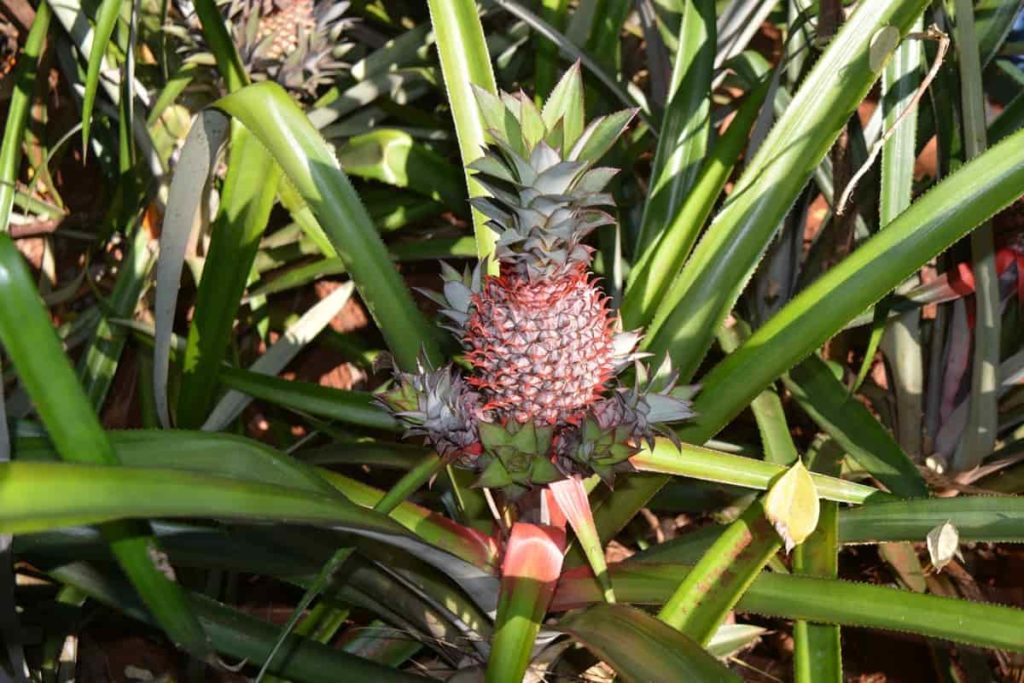
A solution of Etheral (@ 100 ppm) is applied to plants one month before flowering to achieve uniform flowering (more than 80%) in the main season. Fruits are harvested for canning when the base of the developing fruit is slightly deformed. Table fruits are preserved until they turn golden yellow. After harvesting, the plant crop can be maintained as a ratoon crop for three to four years, depending on soil conditions.
Ratooning in high-density plantings showed that the average fruit weight in the first and second ratoon was 88% and 79% of the plant yield, respectively. The plant stand is also progressively reduced, resulting in 49 and 46 percent (approx.) reduction in the first and second crops, respectively.
Step 17: Pineapple yield per hectare
The average yield is 50-80 tonnes/hectare depending upon spacing and cultural practices.
- Types of Pesticides Used in Agriculture: A Beginner’s Guide
- Economical Aquaculture: A Guide to Low-Budget Fish Farming
- 15 Common Planting Errors That Can Doom Your Fruit Trees
- How to Make Houseplants Bushy: Effective Tips and Ideas
- Innovative Strategies for Boosting Coconut Pollination and Yield
- Pollination Strategies for Maximum Pumpkin Yield
- The Complete Guide to Chicken Fattening: Strategies for Maximum Growth
- Natural Solutions for Tulip Problems: 100% Effective Remedies for Leaf and Bulb-Related Issues
- Revolutionizing Citrus Preservation: Towards a Healthier, Greener Future
- Natural Solutions for Peony Leaf and Flower Problems: 100% Effective Remedies
- Maximizing Profits with Avocado Contract Farming in India: A Comprehensive Guide
- Natural Solutions for Hydrangea Problems: 100% Effective Remedies for Leaf and Flowers
- The Ultimate Guide to Choosing the Perfect Foliage Friend: Bringing Life Indoors
- From Sunlight to Sustainability: 15 Ways to Use Solar Technology in Agriculture
- The Ultimate Guide to Dong Tao Chicken: Exploring from History to Raising
- The Eco-Friendly Makeover: How to Convert Your Unused Swimming Pool into a Fish Pond
- Mastering the Art of Delaware Chicken Farming: Essentials for Healthy Backyard Flocks
- 20 Best Homemade Fertilizers for Money Plant: DIY Recipes and Application Methods
- How to Craft a Comprehensive Free-Range Chicken Farming Business Plan
- Brighten Your Flock: Raising Easter Egger Chickens for Beauty and Bounty
- How to Optimize Your Poultry Egg Farm Business Plan with These Strategies
- Subsidy for Spirulina Cultivation: How Indian Government Schemes Encouraging Spirulina Farmers
- Ultimate Guide to Raising Dominique Chickens: Breeding, Feeding, Egg-Production, and Care
- Mastering the Art of Raising Jersey Giant Chickens: Care, Feeding, and More
- Ultimate Guide to Raising Legbar Chickens: Breeding, Farming Practices, Diet, Egg-Production
- How to Raise Welsummer Chickens: A Comprehensive Guide for Beginners
- How to Protect Indoor Plants in Winter: A Comprehensive Guide
- Ultimate Guide to Grow Bag Gardening: Tips, Tricks, and Planting Ideas for Urban Gardeners
- Guide to Lotus Cultivation: How to Propagate, Plant, Grow, Care, Cost, and Profit
- Agriculture Drone Subsidy Scheme: Government Kisan Subsidy, License, and How to Apply Online
- Ultimate Guide to Raising Araucana Chickens: Breed Profile, Farming Economics, Diet, and Care
- Bringing Hydroponics to Classroom: Importance, Benefits of Learning for School Students
- Ultimate Guide to Raising Polish Chickens: Breed Profile, Farming Economics, Diet, and Care
- Ultimate Guide to Raising Australorp Chickens: Profile, Farming Economics, Egg Production, Diet, and Care
- Silkie Chicken Farming: Raising Practices, Varieties, Egg Production, Diet, and Care
- Sussex Chicken Farming: Raising Practices, Varieties, Egg Production, Diet and Care